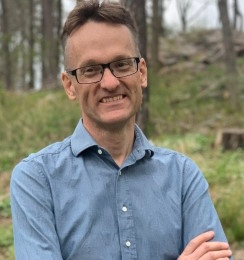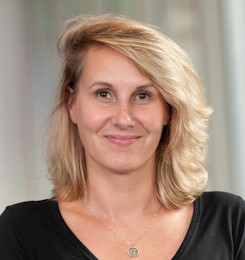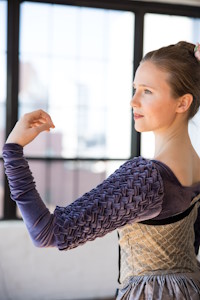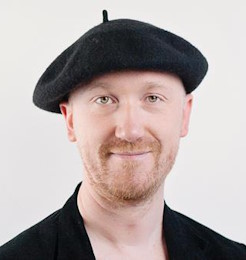| Tuesday Sept. 19 |
Wednesday Sept. 20 |
Thursday Sept. 21 |
Friday Sept. 22 |
|
|---|---|---|---|---|
| 8:45 | Registration | Registration | ||
| 9:00 | Bio+Med+Vis Summer School |
Paper Session 3 | Paper Session 4 | |
| 10.15 | Coffee | Coffee | ||
| 10:45 | Industry Talks | Capstone & Closing |
||
| 12:00 | Lunch & Registration |
Lunch | Sandwich-to-go | |
| 13:30 | Bio+Med+Vis Summer School |
Opening | Panel Discussion | |
| 13:50 | Paper Session 1 | |||
| 14:30 | Poster Fast-Forward | |||
| 15:00 | Coffee | Coffee, Posters & Image contest |
||
| 15:30 | Paper Session 2 | Tutorials | ||
| 16:45 | Break & move to Dome | |||
| 17:00 | Keynote | |||
| 18:00 | Social Event | Conference Dinner |
All VCBM sessions take place in the lecture hall K1 in the Kåkenhus building if not noted otherwise. Registration and coffee breaks are located in front of the lecture hall. The Bio+Med+Vis Summer School happens in room KO301 in Kopparhammaren 2 on the opposite side of the river.
Bio+Med+Vis Summer School
Keynote: Peering into the molecular mechanisms of life with data, computers & visualization

Biography: Erik is a professor in Computational biophysics at KTH Royal Institute of Technology and Stockholm University. His research focus on that, with help from genetic information and experimental structures, model properties and dynamics in biological macro molecules such as proteins and cell membranes. His work has resulted in one of the worlds most spread programs for biomoleculare modeling (Gromacs), which is used for distributed calculations in the Folding@Home-project. His research group has made important discoveries concerning how proteins are placed i cell membranes, how ion channels are opened and closed, and how virus infects cells by fusion with cell membranes. The development of computation methods for biomolecules has as a link between theory and experiment led to breakthrough in applications, for example within the pharmaceutical industry.
Capstone: Deep Learning-Based Automatic Diagnosis and Prognostication in Radiology and Nuclear Medicine Imaging

Biography:Ida is an Associate Professor in the Computer Vision group at the department of Electrical Engineering at Chalmers University of Technology, working with machine and deep learning techniques for medical image analysis.
She completed two Master’s degrees in Engineering Physics followed by Medical Physics, and proceeded with a PhD in Medical Physics at Umeå University, graduating in 2015. She then moved to Memorial Sloan Kettering Cancer Center in New York, USA for a postdoctoral fellowship, followed by working as a Research Associate and Senior Research Scientist, and returned to Sweden and Chalmers University of Technology in late 2021.
Industry Talks
Panel Discussion: The role of AI/ML in biomedical visualization
- Renata Raidou (TU Wien, Austria)
- Gunnar Läthén (CTO Context Vision)
- Ida Häggström (Chalmers University of Technology, Sweden)
- Tino Ebbers (Linköping University, Sweden)
Paper Session 1: Decision making and surgery planning
Paper Session 2: Radiology and histopathology
Paper Session 3: Storytelling and communication
Paper Session 4: Neuroanatomy and omics
Poster Fast-Forward, Poster Session & Image Contest
The posters will be presented in a fast-forward session followed by a regular poster session during the coffee break. There will also be the possibility to vote for the People’s choice award of the VCBM Image Contest. You can find the posters also in the Poster Gallery and the entries of the Image Contest in the Image Gallery.
Tutorials
Visual Interactive Analysis of Molecular Dynamics (VIAMD) workshop
The Visual Interactive Analysis of Molecular Dynamics (VIAMD) workshop aims to provide researchers and scientists with a comprehensive understanding of the capabilities and applications of VIAMD, a powerful visual analysis software for molecular dynamics simulations. Molecular dynamics simulations play a vital role in studying the behavior and properties of molecular systems, and VIAMD offers a suite of tools and functionalities to assist in their analysis and interpretation.
During the workshop, participants will be introduced to the fundamental concepts of molecular dynamics simulations and their relevance in various scientific disciplines. They will learn how VIAMD can aid in visualizing and analyzing molecular structures, trajectories, and interactions. The workshop will cover topics such as:
- Visualizing Molecular Systems:
- The workshop will explore the different visualization techniques available in VIAMD to represent molecular structures, surfaces, and animations. Participants will learn how to effectively visualize complex molecular systems and observe molecular motions.
- Analysis Tools and Techniques:
- Participants will be introduced to the analysis tools provided by VIAMD, such as calculating RMSD, RDF, and energy profiles. They will learn how to extract meaningful information from molecular dynamics simulations using these tools.
- Trajectory Analysis:
- The workshop will delve into the analysis of molecular trajectories using VIAMD. Participants will discover how to identify conformational changes, study binding events, and characterize molecular motions over time.
- Data Exploration and Workflow:
- The workshop will cover techniques for exploring and navigating large datasets generated from molecular dynamics simulations. Participants will learn how to efficiently explore and utilize simulation results using VIAMD’s interactive features.
The workshop will be a combination of presentation and hands-on demonstration. Participants are encouraged to bring their own datasets to work on during the workshop, allowing them to apply the concepts and techniques learned directly to their research.
Rapid Prototyping with Inviwo
Inviwo is a rapid prototyping framework for visualizing spatial and abstract data. In this tutorial, we show how Inviwo can be utilized for easily creating visualizations for different applications. We provide an overview of the concepts used in Inviwo like its visual network editor and the associated data flow paradigm. Several hands-on examples illustrate how to import data and build your own visualization networks. In the second part, we cover how to extend the existing functionality using python scripting and C++.
Inviwo is available at inviwo.org and Github (github.com/inviwo/inviwo).
Social Event


Biographies: Swedish-born Julia Bengtsson lives in New York and has created over 20 original ballets, films and opera productions for venues including Carnegie Hall, UN Headquarters, Bruno Walter Auditorium at Lincoln Center, and Alvin Ailey Dance Center. Her stage direction in Opera Lafayette’s production of Venus and Adonis was praised by The Washington Post as “a fine evening’s entertainment”. Other commissioners include Connecticut Ballet, Atlanta Baroque Orchestra, New York Dance Project, and New York Renaissance Chorus. She moved to New York in 2012, following her graduation from the Royal Swedish Ballet School and was a Scholarship Student at Joffrey Ballet School. A New York Baroque Dance Company-member since 2018, Julia Bengtsson has found in artistic director Catherine Turocy unique mentorship and guidance from her over 40 years in the dance field. Julia Bengtsson has presented her work at seminars, conferences and workshops at Temple University, NYU Steinhardt, University of Pittsburgh and Stanford University. In 2021 she was the first choreographer to be awarded a position in Early Music America’s Emerging Professional Leadership Council.
Gunnar is Associate Professor at Linköping University, IMT. He has a M.Sc. in theoretical physics, and did a Ph.D. in modelling of biological systems at control engineering departments at Linköping University and Chalmers. I then started his own group, in 2011, at IMT. He works with the development of digital twins: computer models describing cells, organs, and the whole body. These twins are useful for eHealth, drug development, basic research, replacement of animal experiments, and artistic expressions.

